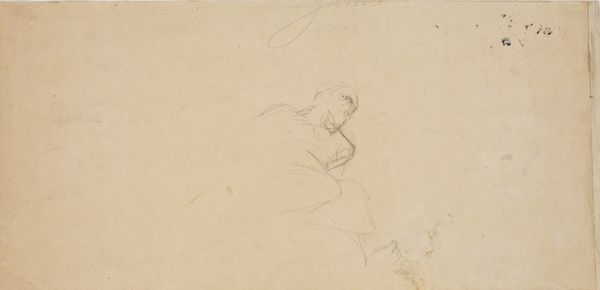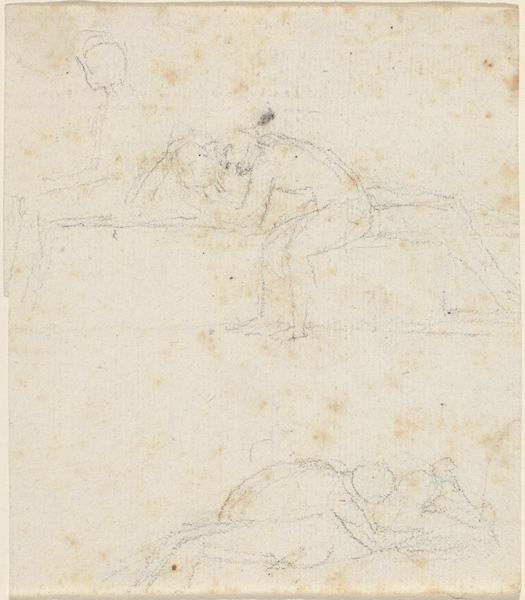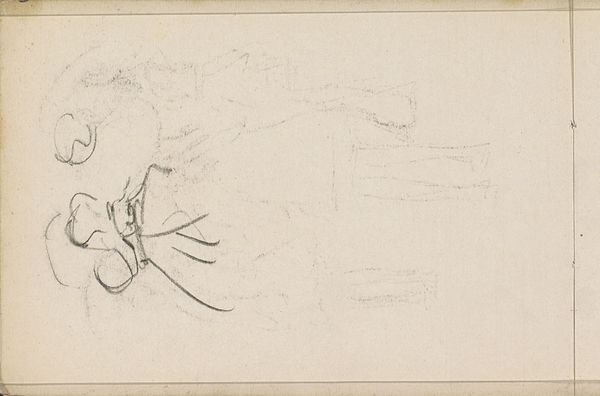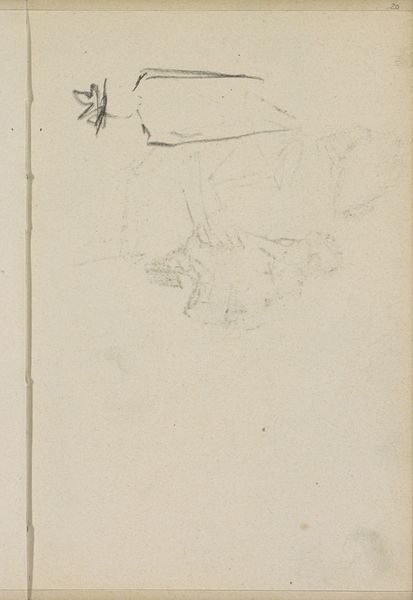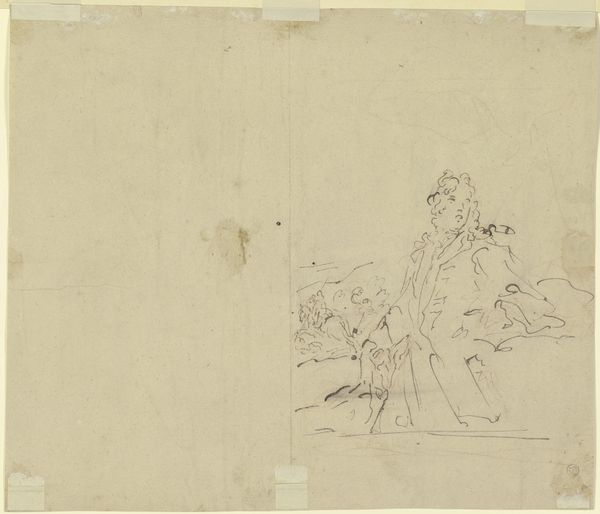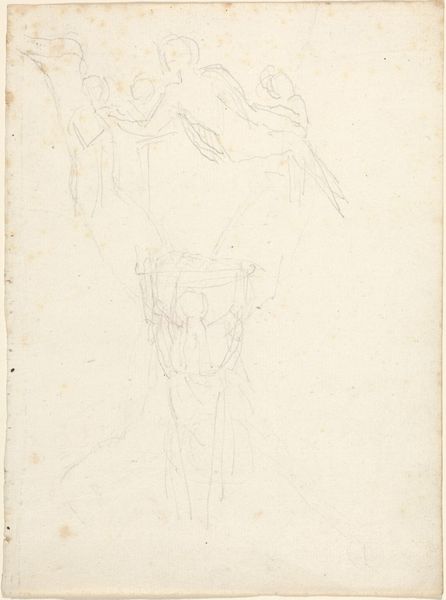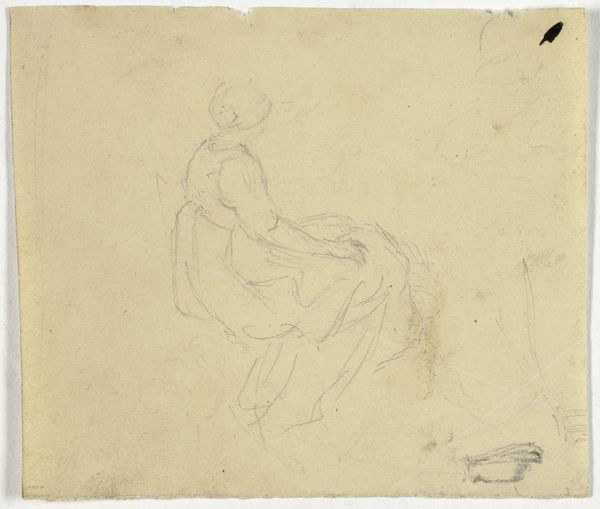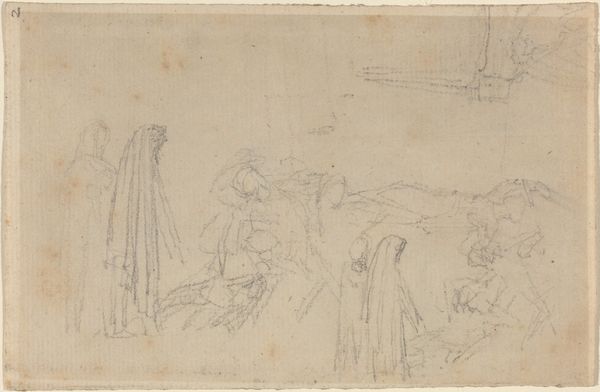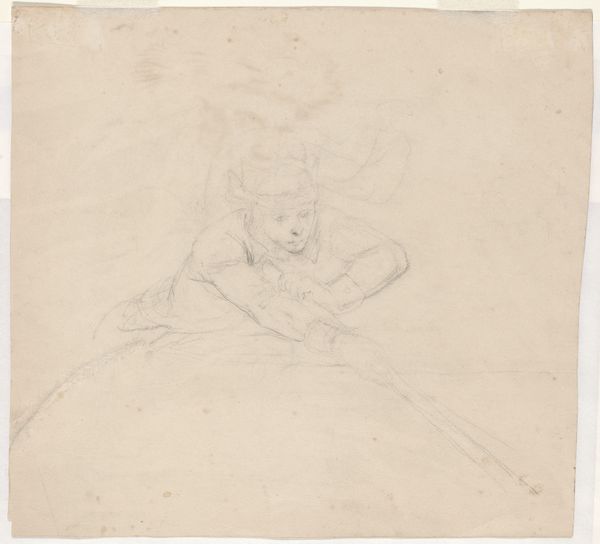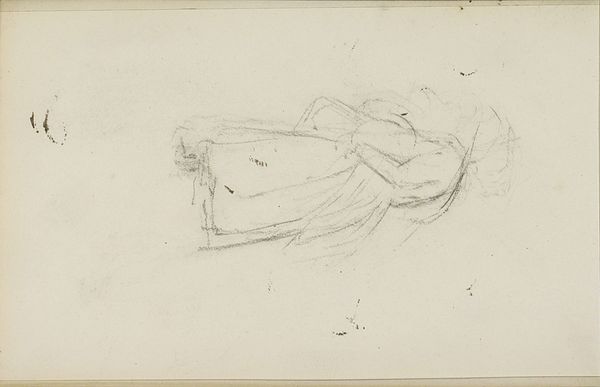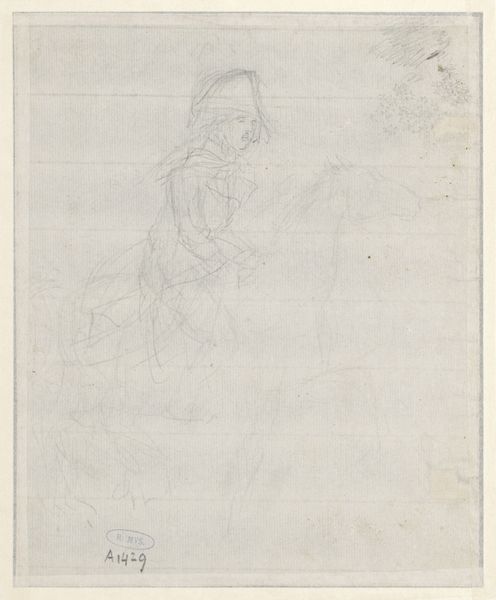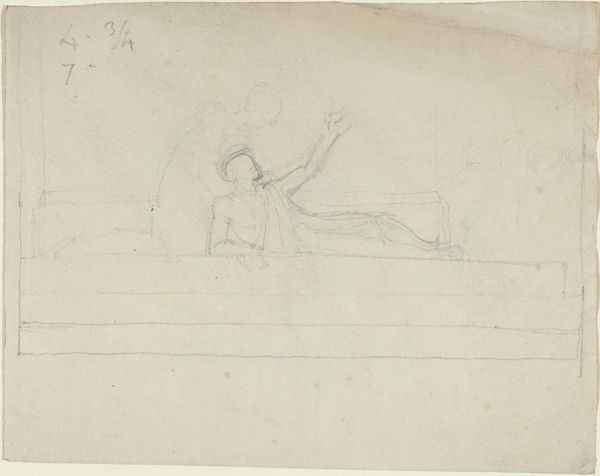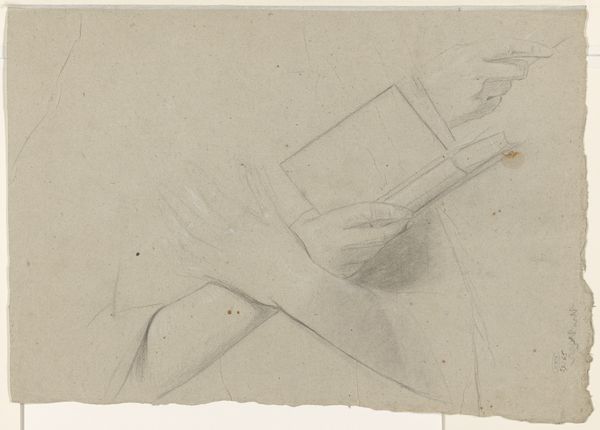![Sheet of Studies [recto and verso] by John Flaxman](/_next/image?url=https%3A%2F%2Fd2w8kbdekdi1gv.cloudfront.net%2FeyJidWNrZXQiOiAiYXJ0ZXJhLWltYWdlcy1idWNrZXQiLCAia2V5IjogImFydHdvcmtzLzYxYWQ1MmZjLTRjYmMtNDA5Zi05ODU0LWIyYjkyNGJmZWY3YS82MWFkNTJmYy00Y2JjLTQwOWYtOTg1NC1iMmI5MjRiZmVmN2FfZnVsbC5qcGciLCAiZWRpdHMiOiB7InJlc2l6ZSI6IHsid2lkdGgiOiAxOTIwLCAiaGVpZ2h0IjogMTkyMCwgImZpdCI6ICJpbnNpZGUifX19&w=3840&q=75)
drawing
#
drawing
#
amateur sketch
#
toned paper
#
light pencil work
#
pencil sketch
#
incomplete sketchy
#
personal sketchbook
#
ink drawing experimentation
#
sketchbook drawing
#
portrait drawing
#
sketchbook art
Dimensions: overall: 16.4 x 20.5 cm (6 7/16 x 8 1/16 in.)
Copyright: National Gallery of Art: CC0 1.0
Editor: This drawing, "Sheet of Studies [recto and verso]" by John Flaxman, is like a whisper on paper, a collection of fleeting ideas rendered in pencil. What narratives do you find embedded in these sketches? Curator: For me, this isn't just a sheet of studies; it's a portal into Flaxman's intellectual landscape, revealing his deep engagement with neoclassical ideals and the human form. Consider how the artist approaches the representation of bodies: how do these figures conform to, or perhaps resist, the dominant ideologies of beauty and power in the late 18th and early 19th centuries? Do you see any challenges to the established gender norms of the era reflected in these lines? Editor: I hadn’t really thought about that… I was mostly focused on how loose and free the sketches are, how unfinished. It feels almost intimate, like looking over his shoulder. Curator: Exactly. It is a look at the artist’s interpretation and experimentation, revealing what was happening in that period and how this ties into gender and beauty. What power dynamics were in play, and whose voices were being excluded? Remember, even in sketches, artists are making choices –conscious or unconscious – that reflect their socio-political context. Does seeing it in this light shift how you perceive the artwork? Editor: It definitely does. I’m now thinking about how even in a “simple” study, there are layers of meaning and intent, subtly influenced by social and political ideas of that period. I will definitely bring this perspective with me as I continue exploring the museum. Curator: And remember, art is not created in a vacuum. Engaging with the historical and social context is critical for an understanding of an artwork. Every line carries a message, whether explicit or implied.
Comments
No comments
Be the first to comment and join the conversation on the ultimate creative platform.
